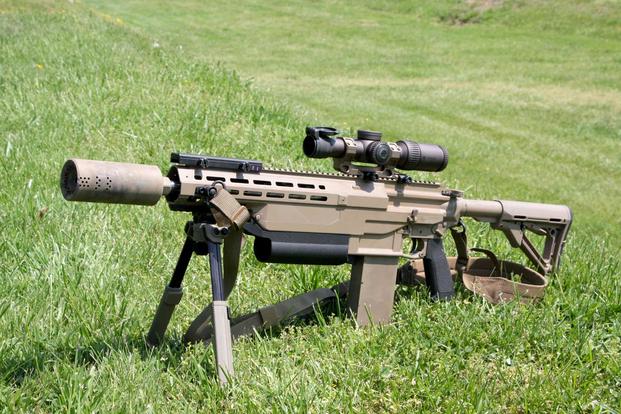More troops are set to be equipped with the successor to the M4 rifle and M249 Squad Automatic Weapon, or SAW, this year, as the Army aims to buy thousands more prototype guns.
The annual budget plans unveiled by the Army on Monday come amid a high-stakes competition between companies on which will be the force's main arms dealer. The service's proposal will now go to Congress, and lawmakers will work up their own version of its annual budget over the coming months.
The Army has requested the purchase of 29,046 so-called Next Generation Squad Weapons, an umbrella term for offerings from Sig Sauer and LoneStar Future Weapons. That is a huge boost from the 12,000 new weapons purchased for this year and the 3,000 bought in 2021.
Read Next: VA Asks for 22% Increase in Spending on Medical Care as Part of Record $301 Billion Budget
The weapons are expected to be tested by various units for feedback that will play into the Defense Department's decision on what the new rifle and machine gun for the Army will be. The M4 is a smaller variant of the M16 rifle, originally fielded in 1969. The SAW, which uses 5.56mm ammo, was issued to units in 1984, serving as a much lighter alternative to the Army's M240L machine gun, which uses 7.62mm ammo. That weapon is not on deck to be replaced.
The weapon procurement is a part of the Biden administration's $178 billion proposal for the Army's budget in the next fiscal year, which starts Oct. 1. That budget is just a slice of the entire federal budget.
While it could be up to a year before the Army decides between the Sig Sauer or Lonestar weapons, in January it selected a new advanced optic to be mounted on those weapons. Vortex Optics was awarded a $2.7 billion contract to build 250,000 optics over the next 10 years.
The Next Generation Squad Weapons program was launched in 2017. The Army wanted weapons to use a 6.8mm round, over concerns that the current 5.56mm is too small, especially against an adversary with body armor. That new ammo is also aimed to be lighter than the current brass ammo used by troops.
As part of the budget proposal, the Army also plans to reduce the size of its active-duty component, shrinking from 485,000 soldiers authorized this year to 473,000. The service currently has about 476,000 active-duty soldiers, according to budget estimates.
That dramatic reduction comes amid concerns from Army leaders over recruiting struggles during the pandemic, a multi-dimensional problem involving more stringent background checks on a potential recruit's history of prescription drug use, minor criminal charges, obesity and failing the service's mandatory IQ test.
To combat dwindling recruiting, the service has made dramatic boosts to recruiting bonuses, including a $50,000 incentive for those signing up for the infantry that far exceeds sign-on bumps during the peak of the post-9/11 wars.
The National Guard and Reserve will not see any cuts to personnel under the budget plans.
The service also seeks to fund 22 Combat Training Center, or CTC, rotations despite Army leaders growing concerned about the massive pre-deployment training events becoming a burden on the force. CTCs are typically held at the National Training Center at Fort Irwin, California, or the Joint Readiness Training Center at Fort Polk, Louisiana.
Sergeant Major of the Army Michael Grinston, Army Chief of Staff Gen. James McConville and then-Secretary of the Army Ryan McCarthy announced a reevaluation of the rotations in 2020, saying the service needed to better balance training opportunities.
One of those CTCs funded will be in Alaska, following a beta test for a rotation in March. During the initial rotation, leaders were hoping to test out Army equipment, including vehicles, weapons and clothing at -65 degrees Fahrenheit. However, temperatures rarely dipped below -20 degrees, not pushing gear or tactics to their limits.
The planned budget also calls for Army units in Alaska to be outfitted with 13 Cold Weather All-Terrain Vehicles, or CATVs. Right now, the main combat vehicle is the Stryker, but being a wheeled vehicle, it cannot be driven off-road into the snow.
-- Steve Beynon can be reached at Steve.Beynon@military.com. Follow him on Twitter @StevenBeynon.
Related: The Army's Next-Generation Squad Weapon Is a Big Hit With SOCOM












